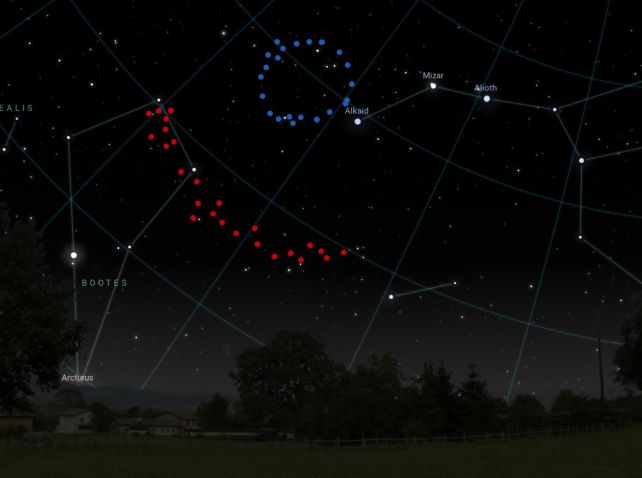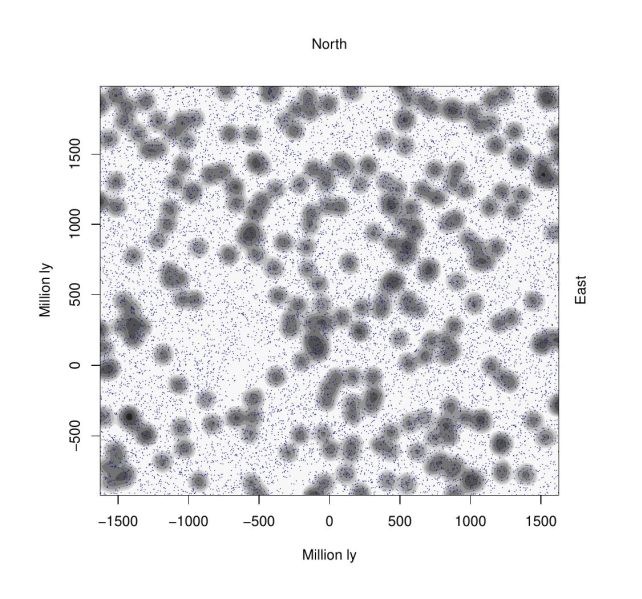Discovery of Massive Formation in the Cosmic Depths Challenges Our Understanding of the Universe
A massive construction located in the far reaches of the cosmos is challenging our comprehension of the evolution of the Universe.
After traversing a distance of 6.9 billion years, a luminous glow has unveiled a colossal and nearly flawless circle of galaxies, spanning approximately 1.3 billion light-years in width. This extraordinary formation defies any existing knowledge of cosmic structures or the mechanisms behind their creation.
Dubbed “The Big Ring,” this enigmatic entity may necessitate revisions to the established model of cosmology.
During the 243rd gathering of the American Astronomical Society, astronomer Alexia Lopez from the University of Central Lancashire unveiled this groundbreaking discovery.

Lopez and her colleagues have made a remarkable discovery – the second colossal structure. Interestingly, this newfound structure, known as the Big Ring, is located in the same region of the sky and at the same distance as the first one, called the Giant Arc. The announcement of the Giant Arc’s existence in 2021 left astronomers perplexed, and now the Big Ring only adds to the enigma.
According to Lopez, these two immense structures pose a challenge to our current understanding of the universe. Their extraordinary sizes, unique shapes, and close proximity in the cosmos undoubtedly hold significant implications. However, the exact message they convey remains elusive.
One possible connection that immediately comes to mind is the concept of Baryon Acoustic Oscillations (BAOs). These are vast circular arrangements of galaxies scattered throughout space. In essence, they are remnants of acoustic waves that traversed the early Universe and froze when the expansion of space rendered acoustic waves immobile.
However, it is important to note that the Big Ring does not fit the characteristics of a BAO. BAOs have a fixed diameter of approximately 1 billion light-years. Upon thorough examination, it becomes evident that the Big Ring takes on a spiral-like shape, aligned in a manner that resembles a ring.

The unanswered question that remains is: What exactly is it? And how does it impact the Cosmological Principle, which asserts that any given region of space should appear similar to all other regions in all directions?
According to Lopez, we anticipate matter to be uniformly distributed throughout space when observing the universe on a large scale. Therefore, any noticeable irregularities should be absent beyond a certain size.
However, both the Giant Arc and the Big Ring defy this expectation. These structures surpass the current theoretical size limit of 1.2 billion light-years. The Giant Arc is nearly three times larger, while the circumference of the Big Ring is comparable to the length of the Giant Arc.
Size is not the only concern; it also raises questions for cosmology, the field dedicated to studying the Universe’s evolution. Although the current model aligns best with our observations, there are certain aspects that prove challenging to explain within its framework.
To address these challenges, alternative models have been proposed. One such model is Roger Penrose’s conformal cyclic cosmology, which suggests that the Universe undergoes endless cycles of Big Bang expansion. This model predicts the existence of ring structures. However, it is important to note that conformal cyclic cosmology also faces significant problems of its own.
It is also possible that the formations observed, namely the Big Ring and the Giant Arc, are a form of topological defect in the fabric of space-time called cosmic strings. These cosmic strings are believed to be similar to wrinkles that span the width of a proton and emerged during the early stages of the Universe’s expansion, eventually becoming fixed in place. While there is limited physical evidence of cosmic strings, the theoretical evidence is quite promising.
Currently, the true meaning of the Big Ring and the Giant Arc remains unknown. It is plausible that they are simply chance arrangements of galaxies swirling across the sky, although the probability of this seems quite low.
The most optimistic prospect would be to discover more instances of such galaxy arrangements scattered throughout the Universe, hidden in plain sight.
“Based on our current understanding of cosmological theories, we did not anticipate the existence of structures on this scale,” explains Lopez. “We might have expected only one exceptionally large structure within our observable universe. However, the presence of both the Big Ring and the Giant Arc as two massive structures, and even being cosmological neighbors, is incredibly intriguing.”
The research was presented at the 243rd meeting of the American Astronomical Society.
Do not forget to share your opinion with us to provide you with the best posts !



0 Comments